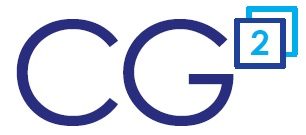December is the time of year when most CPG companies know if their gross sales will miss, hit or exceed the budget target. If sales are falling short of the annual goal, additional trade promotion spending can be used to secure additional merchandising at retail for that incremental push to the year-end sales number.
What if your actual year-to-date trade spending is under budget? You still don't know if you have funds to spend because you know there are unpaid bill-backs and rebates. Here's the challenge: How do you get a complete and accurate view of your trade funds are vs. budget or earnings that includes ALL of your trade spending?
Virtually all ERPs do a good job tracking off-invoice tracking and net-bill allowances. Sometimes these are called ‘on-invoice’ allowances. However, any promotional activity paid after the transaction creates an accounting and reporting challenge. Rebates and bill-backs are financial commitments between the manufacturer and the distributor or the retailer. So how do you determine the amount of outstanding bill-backs and rebates you haven’t paid? The measure you need is called net-liability.
Here are the calculations:
Net Liability = Incurred Liability - Total Amount Paid + Amounts Overpaid - Released Liability
Net Liability is what you haven't paid and still owe.
Incurred Liability is the amount you are obligated to pay, one way or another.
Total Amount Paid is the sum of all your checks, ACH payments, short-pays and deductions taken by the customer, typically the retailer
Amount Overpaid is something you paid but you technically didn't owe it, or you never recorded the liability. Take for example a situation where you accrued $4 per case on 1,000 cases for a reduced price at retail. The retailer deducts $4,500, adding an additional $500 fee on top of what you planned and incurred. You only incurred $4,000, but you paid $4,500. The $500 does NOT reduce your promotional liability by an extra $500.
Released liability is when you determine you will not have to pay for something that you marked as a liability. For example, your display fee was approved at $10k, but you now only have to pay $6k because fewer stores set up the display. When you close the promotion, you release $4k of future liability.
Incurred Liability =
For Direct customers: Actual cases shipped times bill-back allowance per case.
For Indirect customers: Scan data, warehouse withdrawal or planned volume times bill-back allowance per unit.
For both direct and indirect accounts you then add the fixed fee or lump-sum.
So why do CPG companies struggle with these calculations?
Challenge #1: Do you have the up-to-date details for every promotion and rebate? Calculating promotional liability starts with accurate rebate and trade promotion allowance information. If a deal isn’t in the system, or if you don’t have the most recent Excel spreadsheet, your net liability calculation is doomed before you even start your analysis. It is still surprising to me how any CPG manufacturers tolerate the post-dating of promotions into TPM and ERP systems, and how many still use Excel as their 'TPM' solution.
Challenge #2: Net liability and Amount paid must be calculated by event by customer and by product item. Performing this calculation at any other level can result in over-stating or understating net liability. This requirement creates a burden to process lots of data.
Challenge #3: Over-paid lump-sum fees and rebates do not reduce your promotional liability. If you committed to a $10k display fee, but ended up paying $12k, the $2k over payment does not reduce your promotional liability. Failure to keep track of over payments prevents organizations from ever knowing their true net promotional liability.
Challenge #4: There are no shipments for indirect customers to calculate actual incurred liability. Many CPG companies use the lack of information for indirect customers as an excuse not to track promotions for indirect customers. In the absence of hard data for your indirect customers, the next best thing is to use the planned volume or sales for the event. This captures the data so that for use in future planning, allowing the comparison of planned spend vs. actual spend and adjusting the next promotional forecast accordingly.
Challenge #5: Payment taken through short-pay deductions are more difficult to map back to the specific rebate and bill-back transaction than checks. Many ERPs don’t offer an easy way to manage promotional deductions and map them back to the original promotional liability. If you don’t map the deduction back to the original event and allowance, you’ll never be able to know when each specific rebate is paid, or under/over paid.
Now we know why many CPG companies struggle to know if they are under or over spend on the trade budget.
What’s the answer to this trade promotion problem?
Get a trade promotion management solution. TPM solutions are designed to address every one of these challenges and more. A TPM solution will show you if you have available trade promotion funds to spend in December and hit your year-end sales goal.
